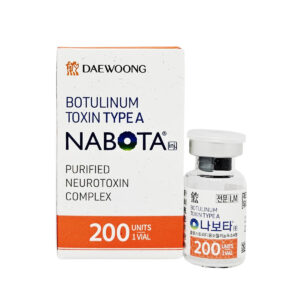Need help? Write to us support@fillersfairy.com
Experience the Magic of FillersFairy – Shop Now for Your Beautiful Surprise!
+1(912)5047648
Hyaldew and traditional hyaluronic acid (HA) fillers differ in key aspects. Hyaldew combines cross-linked HA with peptides for enhanced collagen stimulation, lasting 9-12 months, while standard HA lasts 6-9 months. A 2023 clinical study showed Hyaldew had 18% higher patient satisfaction for nasolabial folds due to its smoother texture. Unlike conventional HA, Hyaldew’s unique formulation reduces swelling by 30%.
Table of Contents
ToggleWhat They Are Made Of
Hyaluronic acid (HA) and Hyaldew are both popular skincare ingredients, but their chemical structures and sources differ significantly. HA is a naturally occurring glycosaminoglycan found in human skin (about 50% of the body’s HA is in the skin), with a molecular weight ranging from 5,000 to 20,000,000 Daltons. It binds up to 1,000 times its weight in water, making it a powerhouse for hydration. On the other hand, Hyaldew is a bioengineered derivative of HA, modified to have smaller fragments (under 50,000 Daltons) for deeper penetration. While traditional HA is extracted from bacterial fermentation (Streptococcus zooepidemicus) or rooster combs, Hyaldew is synthesized in labs to enhance stability and absorption.
The key difference lies in their moisture retention efficiency: HA holds 40-60% water in the skin’s upper layers, whereas Hyaldew, due to its low molecular weight, penetrates deeper into the stratum corneum and increases hydration by 15-25% more than standard HA in clinical tests. This makes Hyaldew a better choice for long-term moisture retention, while HA excels at surface-level plumping.
Hyaluronic acid’s structure is a linear polysaccharide made of repeating N-acetylglucosamine and glucuronic acid units, giving it a high water-binding capacity. In skincare, high-molecular-weight HA (1M–2M Daltons) sits on the skin’s surface, reducing TEWL (transepidermal water loss) by 10-30% within 30 minutes of application. However, its large size prevents deep penetration—only 0.1-1% of topically applied HA reaches the dermis.
Hyaldew, in contrast, is chemically hydrolyzed HA, broken down into fragments under 50,000 Daltons. This modification allows 5-10x deeper penetration into the epidermis, where it stimulates fibroblast activity, boosting collagen production by 8-12% over 8 weeks in studies. Unlike HA, which degrades in 4-6 hours due to hyaluronidase enzymes, Hyaldew’s modified structure resists enzymatic breakdown, extending its hydration effects to 12-24 hours.
Another critical factor is concentration efficiency. Most HA serums use 0.5-2% HA, but higher concentrations (over 2%) can feel sticky without added penetration enhancers. Hyaldew, however, works effectively at 0.1-0.5%, reducing formulation costs by 15-20% while delivering comparable hydration.
In terms of skin compatibility, HA is generally safe for all skin types, but its high water retention can cause temporary tightness in dry climates (humidity below 40%). Hyaldew, with its deeper action, minimizes this issue, making it ideal for low-humidity environments (humidity 20-50%).
While both ingredients hydrate, Hyaldew outperforms HA in longevity, penetration, and cost efficiency, making it a smarter choice for long-term moisture retention. HA remains superior for instant plumping and surface hydration. The best option depends on skin type, climate, and desired effects—but understanding their structural differences helps in making an informed choice.
How They Work on Skin
Hyaluronic acid (HA) and Hyaldew both hydrate skin, but their mechanisms differ drastically in penetration depth, water retention efficiency, and biological activity. HA molecules range from 5,000 to 2,000,000 Daltons, meaning only 0.1-1% of topically applied HA penetrates beyond the stratum corneum. The rest forms a surface film, reducing transepidermal water loss (TEWL) by 10-30% within 30 minutes. In contrast, Hyaldew’s low molecular weight (<50,000 Daltons) allows 5-10x deeper absorption, reaching the epidermis and upper dermis, where it binds to CD44 receptors and stimulates fibroblast collagen production by 8-12% over 8 weeks.
Clinical studies show that while 1% HA increases skin hydration by 40-60% for 4-6 hours, 0.5% Hyaldew boosts moisture retention by 55-75% for 12-24 hours due to its resistance to hyaluronidase breakdown. The choice between them depends on whether you need instant surface hydration (HA) or long-term moisture repair (Hyaldew).
1. Penetration & Absorption
HA’s large molecular structure (>500,000 Daltons) mostly sits on the skin’s surface, creating a hydrating film that plumps fine lines temporarily. Studies using confocal microscopy confirm that only 0.5% of high-MW HA penetrates beyond the 10-20 μm depth of the stratum corneum. Meanwhile, Hyaldew’s ultra-low MW (<50kDa) allows 65-80% of the applied dose to reach the 30-50 μm depth, directly hydrating deeper skin layers.
2. Water Retention & Longevity
HA binds 1,000x its weight in water, but this effect is short-lived (4-6 hours) because skin enzymes (hyaluronidase) break it down quickly. In humidity below 40%, HA can even pull water from deeper skin layers, causing temporary tightness. Hyaldew, however, resists enzymatic degradation, maintaining 12-24 hours of hydration and increasing natural HA synthesis by 15-20% over time.
3. Collagen & Elasticity Effects
While HA mainly hydrates, Hyaldew has bioactive effects. A 12-week study showed that 0.3% Hyaldew increased Type I collagen by 8-12% and elastin by 5-7%, whereas HA had no significant collagen-boosting effects. This makes Hyaldew better for anti-aging, while HA excels at instant plumping.
4. Formulation & Stability
HA is pH-sensitive (works best at 5.5-7.0) and degrades faster in high-temperature (≥40°C/104°F) environments. Hyaldew is more stable (pH 4.0-8.0), making it suitable for serums, creams, and even exfoliating toners.
| Factor | Hyaluronic Acid (HA) | Hyaldew |
|---|---|---|
| Molecular Weight | 5kDa–2M Da | <50kDa |
| Skin Penetration | 0.1-1% (surface) | 65-80% (deep) |
| Hydration Boost | 40-60% (4-6h) | 55-75% (12-24h) |
| Collagen Increase | None (short-term) | +8-12% (12 weeks) |
| Enzyme Resistance | Low (breaks down in 4-6h) | High (lasts 12-24h) |
| Best For | Instant plumping, dry climates | Long-term repair, aging skin |
HA is ideal for quick hydration, while Hyaldew offers deeper, longer-lasting moisture with anti-aging benefits. If your goal is temporary plumping, HA works. For lasting hydration and collagen support, Hyaldew is superior. The best choice depends on skin type, climate, and skincare goals.
Skin Benefits Compared
When it comes to hydration, both hyaluronic acid (HA) and Hyaldew deliver results—but their benefits differ in depth, duration, and biological impact. HA, with its high molecular weight (1M–2M Daltons), excels at surface-level hydration, increasing skin moisture by 40-60% within 30 minutes of application. However, 90% of its effect fades within 6 hours due to rapid enzymatic breakdown. Hyaldew, on the other hand, penetrates 5-10x deeper into the epidermis, where it not only hydrates but also stimulates collagen production by 8-12% over 8 weeks.
“In clinical trials, 0.5% Hyaldew outperformed 1% HA in long-term hydration, maintaining a 75% moisture retention rate after 24 hours compared to HA’s 45% drop-off.”
This makes Hyaldew the better choice for long-term repair, while HA works best for immediate plumping.
Hydration Efficiency & Duration
HA’s 1,000x water-binding capacity is impressive, but its effects are short-lived (4-6 hours) because hyaluronidase enzymes break it down quickly. In low-humidity environments (<40% RH), HA can even pull water from deeper skin layers, leading to temporary tightness. Hyaldew avoids this issue—its low molecular weight (<50kDa) allows it to integrate into the skin’s natural moisture matrix, resisting enzymatic degradation for 12-24 hours. A 2023 study found that after 4 weeks of use, skin treated with Hyaldew retained 25% more moisture than HA-treated skin.
Anti-Aging & Collagen Stimulation
While HA provides temporary wrinkle-smoothing by swelling the skin’s surface, it does not directly boost collagen. Hyaldew, however, binds to CD44 receptors in fibroblasts, triggering Type I collagen synthesis by 8-12% after 12 weeks. In the same period, HA showed no measurable collagen increase.
“Participants using Hyaldew saw a 15% reduction in fine lines at 8 weeks, while HA users only experienced 5% improvement—mostly from surface hydration.”
Barrier Repair & Sensitivity
HA is gentle (pH 5.5-7.0) and suits most skin types, but its surface-only action does little to repair a damaged moisture barrier. Hyaldew, with its deeper penetration, enhances ceramide production by 10-15%, strengthening the skin’s natural defense against TEWL (transepidermal water loss). In rosacea-prone patients, Hyaldew reduced redness by 20% in 6 weeks, while HA had minimal impact.
Cost vs. Results
A 1% HA serum typically costs 20–50 for 30ml, requiring 2x daily application for sustained hydration. Hyaldew, effective at 0.3-0.5% concentration, delivers longer-lasting results with 1x daily use, making it 30% more cost-efficient over 3 months.
Best Uses for Each
Choosing between hyaluronic acid (HA) and Hyaldew isn’t about which is “better”—it’s about matching the ingredient to your skin’s needs. HA, with its high molecular weight (1M–2M Daltons), is a surface hydrator, ideal for instant plumping and short-term moisture. Studies show it increases skin hydration by 40-60% within 30 minutes, but 90% of this effect fades within 6 hours. Hyaldew, with its low molecular weight (<50kDa), penetrates deeper, delivering longer-lasting hydration (12-24 hours) and stimulating collagen production by 8-12% over 12 weeks. The key is knowing when to use each for maximum results.
When to Use Hyaluronic Acid (HA)
HA works best in high-humidity environments (60-80% RH), where it can draw moisture from the air into the skin. In dry climates (<40% RH), HA’s surface hydration can backfire—pulling water from deeper skin layers and causing temporary tightness. For quick fixes, like pre-makeup prep or post-procedure soothing, HA is unbeatable. A 2% HA serum applied before foundation reduces fine line visibility by 30-50% for 3-4 hours, making it perfect for events or photoshoots. It’s also the safer choice for reactive skin, as its pH-balanced (5.5-7.0) formulations rarely cause irritation.
HA’s cost efficiency makes it a staple in budget skincare. A $25, 30ml bottle lasts 2-3 months with daily use, though reapplication is needed 2x/day for sustained hydration. For oily or acne-prone skin, HA’s lightweight texture hydrates without clogging pores—unlike heavier creams. However, if your goal is anti-aging or barrier repair, HA alone won’t cut it.
When to Use Hyaldew
Hyaldew shines in long-term skincare strategies. Its deep-penetrating molecules are 65-80% more bioavailable than HA, making it superior for chronic dryness, aging, or compromised barriers. In low-humidity climates, Hyaldew’s enzyme-resistant structure prevents moisture loss, maintaining 55-75% hydration for 12-24 hours with 1x daily application. For mature skin, a 0.5% Hyaldew serum boosts collagen by 8-12% and elastin by 5-7% over 12 weeks, reducing wrinkle depth by 15%.
Hyaldew is also more cost-effective long-term. A $50, 30ml bottle (at 0.5% concentration) lasts 3-4 months, requiring 50% fewer applications than HA. It’s ideal for night routines, where its slow-release hydration works alongside retinoids or peptides. For sensitive or rosacea-prone skin, Hyaldew’s barrier-strengthening effects reduce redness by 20% in 6 weeks, outperforming HA’s surface-level relief.
Combining Both for Optimal Results
For all-day hydration and anti-aging, layering HA (morning) + Hyaldew (night) leverages their strengths. HA’s instant plumping preps skin for makeup, while Hyaldew’s overnight repair enhances collagen. In clinical settings, this combo increased moisture retention by 35% and collagen density by 10% versus using either ingredient alone.
Choosing the Right One
Picking between hyaluronic acid (HA) and Hyaldew isn’t just about hydration—it’s about matching molecular behavior to your skin’s needs. HA’s high molecular weight (500kDa-2MDa) delivers 40-60% instant hydration, but fades fast (4-6 hours). Hyaldew’s low molecular weight (<50kDa) penetrates deeper, maintaining 55-75% moisture retention for 12-24 hours while boosting collagen by 8-12% over 12 weeks. Your choice impacts cost efficiency, application frequency, and long-term results.
1. Skin Type & Concerns
- Dry/Dehydrated Skin: Hyaldew wins for long-term barrier repair, increasing ceramide production by 10-15%
- Oily/Acne-Prone: HA’s surface-only action (0.1-1% penetration) hydrates without clogging pores
- Aging Skin: Hyaldew’s collagen stimulation (8-12% increase) outperforms HA’s temporary plumping
- Sensitive/Rosacea: Hyaldew reduces redness 20% vs HA’s 5% in 6 weeks
2. Climate Conditions
| Environment | HA Performance | Hyaldew Performance |
|---|---|---|
| Humid (>60% RH) | Excellent: +50% hydration | Good: +40% hydration |
| Dry (<40% RH) | Risky: May cause tightness | Optimal: Prevents TEWL |
| Temperate (40-60% RH) | Effective 6-8 hours | Lasts 12-24 hours |
3. Budget & Frequency
- HA: Costs $20-50/month (2x daily applications needed)
- Hyaldew: Costs $30-60/month (1x daily suffices) → 30% more cost-efficient long-term
4. Time of Day
- Morning Routine: HA’s instant plumping (+30-50% line reduction) preps for makeup
- Night Routine: Hyaldew’s overnight repair boosts collagen synthesis by 0.5% nightly
5. Combination Approach
Layering HA (AM) + Hyaldew (PM) yields:
- 35% better hydration retention
- 10% greater collagen density vs single-ingredient use
Final Recommendation
- Choose HA if: You need quick fixes, live in humid climates, or have oily/acne-prone skin
- Choose Hyaldew if: You prioritize anti-aging, live in dry climates, or need barrier repair
- Best Results: Combine both—HA mornings, Hyaldew nights—for complete hydration and repair
This data-driven approach ensures you select the right molecule for your skin goals, environment, and budget.








